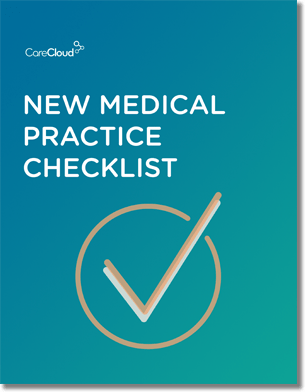Many practices believe a client-server based EHR requires one upfront lump sum, followed by years of not worrying about renewing the system. If you’re one of these practice managers, think again.
Client-server EHRs are actually quite difficult to maintain. Despite the rising popularity of cloud-based EHRs, several single-location practices opt for dedicated hosting because it appears to be cheaper, more practical and secure.
However, this isn’t always the case. Below are some of the financial issues related to adopting a client-server based EHR at your practice.
Operating Costs
A number of practices think cloud-based EHRs will end up costing more than a client-server system in the long run. Yet there are a number of trickle-down costs associated with the latter.
While it’s true that installing the server and software requires a one-time lump sum, many physicians and practice managers forget about the other subscriptions they need.
For instance, let’s consider a licensing subscription of $6,500 for the first physician and $5000 for every additional doctor. We can drop it to a $5000 initial licensing fee for mid- and lower-level staff members, and maybe $4000 for each additional person.
As far as interfaces are concerned, Health Information Exchange (HIE) interface setup fees could run you about $750, with an ongoing connectivity fee of $75. Your ePrescribing interface setup is inexpensive, but we still need to tack on $25.
Of course, we follow with patient portals, whose costs could reach $500 in setup fees, and $75 monthly to your provider. Add another $20 monthly dollars to patient updates and reminders.
Administrative processes aren’t left out either. Budget $100 monthly per provider.
Lastly, you’ll pay for training – $1,000 per day onsite is a standard rate, with web and phone sessions ranging between $200 and $500 a piece. Maintenance fees run at about 20%.
So, in reality, is a client-server EHR truly a one-time fee type of deal?
Identifying Issues
Not only can a client-server EHR cost your practice financially, but it may make you lose precious time and energy.
For instance, how often should your software be updated? Also, since client-server EHR vendors offer varying forms of technical support, how much do you need for your practice? Sometimes you wait 24-48 hours before a technician can arrive at your practice.
Also, there are unforeseen issues associated with each software update that could slow down and affect your practice, making you lose revenue and possibly even patient trust.
With the higher operating costs of client-server systems and the difficulty of identifying issues due to variation of version, install, local equipment and travel, is a client-server really a better option than a cloud-based EHR?
What solution do you prefer – cloud-based or client-server?

Do you know what you need when setting up a new medical practice?



